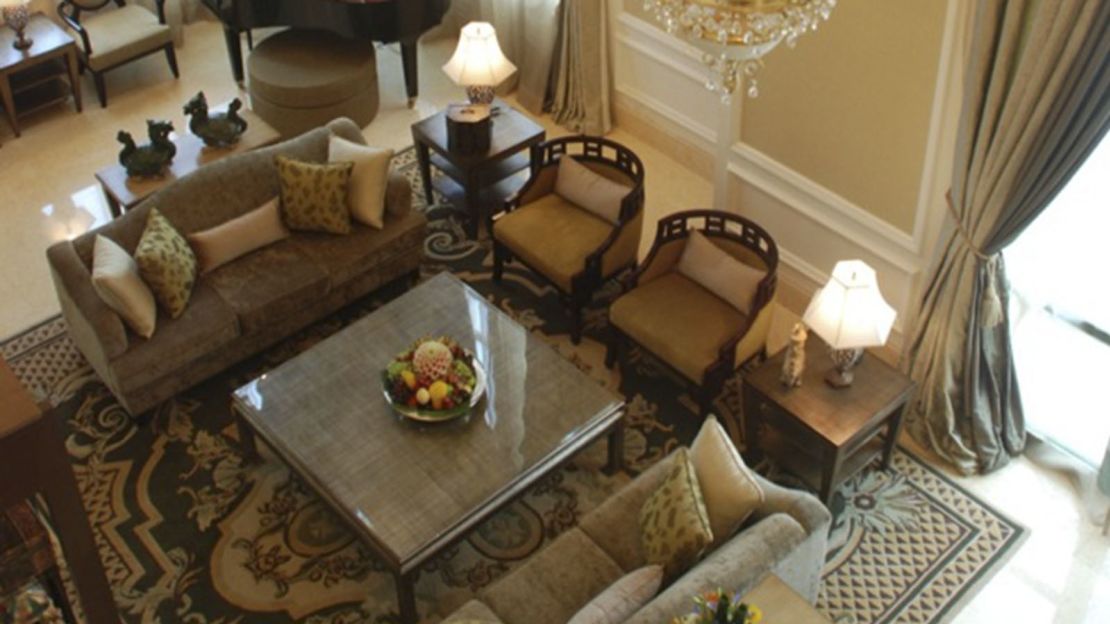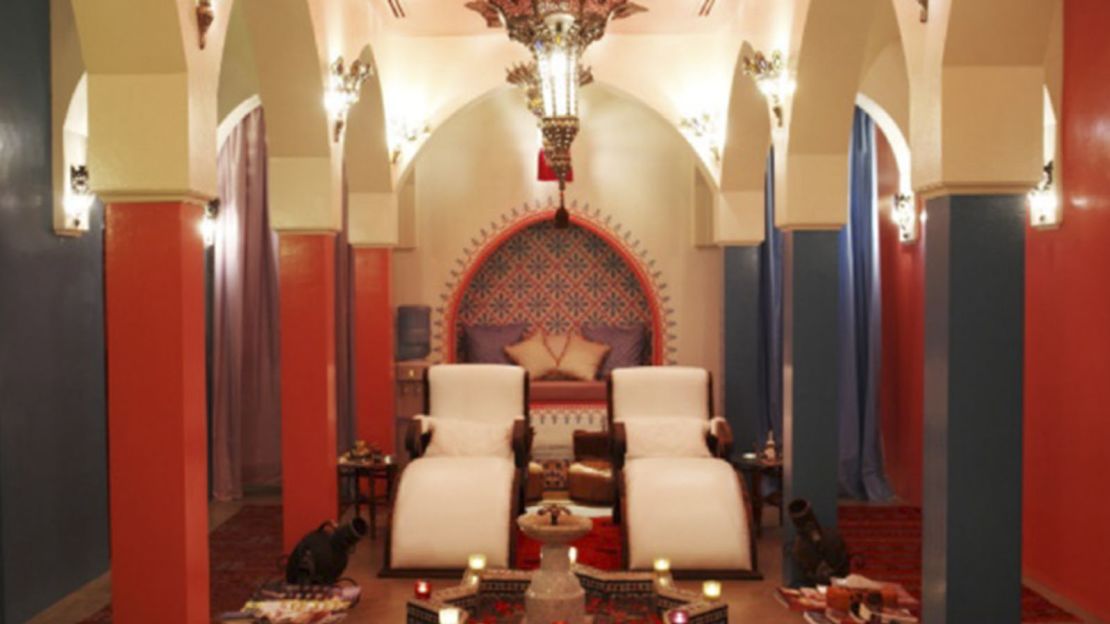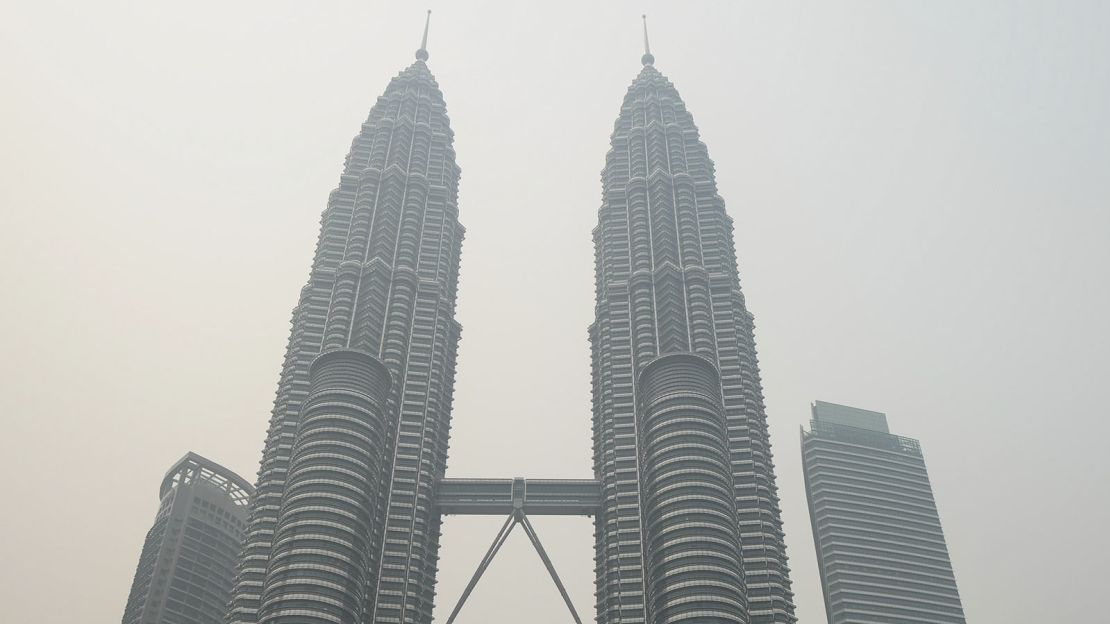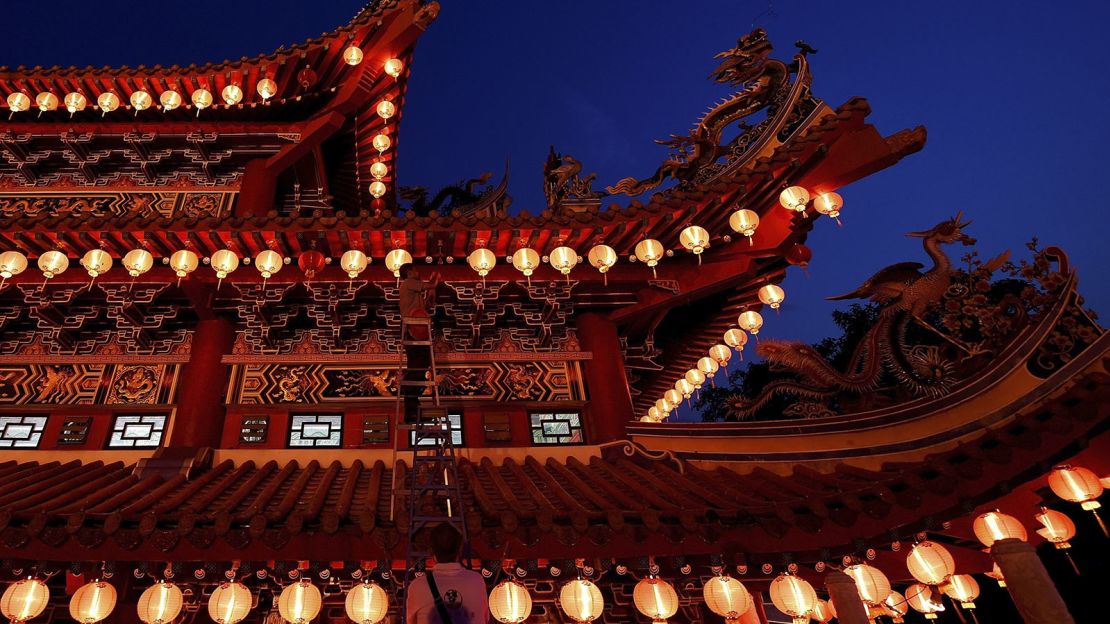Editor’s Note: CNN Insider Guides are thoroughly checked for accuracy. Given the fluid nature of the travel industry, however, some listings may fall out of date before guides can be updated. The best practice is to confirm current information on official websites before making plans to visit any business or attraction.
Kuala Lumpur is one of Asia’s most enticing destinations – but where do you find the best of KL? The buzzing capital of Malaysia offers a collision course of experiences, fueled by the country’s diverse multi-ethnic groups, such as the majority Muslim-Malays, Chinese and Indians.
To experience the best of KL, you need to know where to find the most delicious Malaysian cuisine, hunt down the city’s top bargains and experience a wild night out. Start below:
Hotels
Luxury
Carcosa Seri Negara
Set deep in the city’s historic Lake Gardens, this heritage hotel was the official residence of the highest British representative to the Malay States from 1904 to 1941. Rooms are sizeable. Decor is in line with the hotel’s architectural style, which combines neo-Gothic and Tudor revival influences. With the exception of the LCD TV, you may feel like you’re on the set of a Merchant-Ivory film.
One of Carcosa Seri Negara’s highlights is English afternoon tea, served in the drawing room or on the wrap-around verandah overlooking the gardens. It’s a true best of KL experience.
Ritz-Carlton Kuala Lumpur

The Ritz-Carlton Kuala Lumpur is for those who want to experience the best of KL. Literally and figuratively.
It’s the Ritz-Carlton, so stays include fancy amenities like luxurious high thread-count bedding and top-notch dining. The 464-square-meter penthouse on the top floor overlooks Bukit Bintang’s shopping and entertainment district.
Fancy digs aside, it’s the Ritz-Carlton’s butlers who make stays special. Their track record in filling guest requests includes locating and purchasing a 1950s German World Cup jersey worn by one of the original squad members.
Boutique
Hotel Maya
Rocking timber-strip floors, sizable bathrooms, plush beds and lots of mirrors for the vanity-conscious, the Maya is a self-described “boutique urban resort.”
Interiors project a back-to-nature vibe, thanks to bamboo paneling, a pathway over flowing water and comfortable furnishings. The hydrotherapy swimming pool is equipped with water jets that work high-pressure magic on stressed-out bodies. The hotel is a two-minute walk from the Petronas Twin Towers and other major downtown attractions.
Anggun KL
Occupying two restored colonial houses that were built in the 1920s, Anggun KL stands in what was once a renowned red-light district. Over the years, the area has been transformed into an entertainment zone with bars and restaurants.
There are only 18 rooms, each with handcrafted teak beds, ceiling fans, air-conditioning and air purification features. Interior courtyard rooms are best.
Anggun’s lobby is filled with handmade furniture and kerosene lamps. The floor is lined with 200-year-old encaustic tiles salvaged from old Peranakan houses in Malaysia’s Malacca state.
Budget
BackHome Guesthouse
BackHome Guesthouse consists of four 100-year-old wooden Chinese merchant shophouses that have been restored into a funky hostel with exposed brick walls and high ceilings with wooden beams.
The clean, well-maintained hostel sleeps 42 guests in seven dormitories and two private double rooms. Each dormitory has four to eight beds and is equipped with air-conditioning, security lockers and reading lights. Rates include linen, free Wi-Fi, breakfast and all-day coffee and tea. The double room has plenty of built-in storage space and large louvred windows that take in light and fresh air.
Langkawi: Insiders share tips to Malaysia’s island paradise
Dining
Top Hat Restaurant
A short walk from the Petronas Twin Towers in one of the few immaculate bungalows still standing in the city center, Top Hat has welcomed international celebrities such as Akon, Linkin Park and Andy Lau Tak-Wah.
Renowned for Western fusion cuisine kicked up a notch with Eastern herbs and spices, the menu changes every three months.
As of this writing, highlights include duck confit salad with green pear, served with blue cheese dressing; and homemade seafood pot pie, an orgy of mussel, squid, fish and prawn stew topped with baked mashed potatoes and served with berry salad with lemon dressing.
Bijan Restaurant
If you want to enjoy local Malay food without sweating it out at hot hawker stalls, hit up Bijan Restaurant.
Our recommendations: rusuk panggang (char-grilled marinated short ribs served with sweet soy sauce and spicy sambal belacan); sotong hitam manis (squid cooked with chili paste, lemongrass and squid ink); and kerutup daging (tender beef stewed in spiced coconut gravy).
Everything goes well with nasi ulam (white rice tossed with dried shrimp, salted fish, anchovies, spicy belacan, herbs and spices). Traditional desserts such as sago gula melaka (chilled sago served with coconut milk and palm sugar syrup) are popular.
Old China Cafe
In a 1917 shophouse, Old China Cafe serves Peranakan Baba-Nyonya cuisine, which combines Malay, Chinese and Eurasian cooking styles.The soundtrack features popular Chinese songs from the 1920s, which complements the period-inspired dining experience.
Start with nyonya pai tee — deep-fried wheat flour served with condiments such as bean sprouts, shredded turnip, carrots and dried shrimp — which comes with a side of chili for stronger flavor. Another local delicacy is jui hu char (stir-fried shredded turnips, carrots, cuttlefish, mushrooms and chicken served with fresh lettuce and a side of chili).
Jalan Alor Hawker Centre
Open 24-7, the Jalan Alor Hawker Centre is a best of KL spot for street food. The decor is gritty: rows of tables and chairs set up along both sides of traffic-choked Jalan Alor. But it’s a fantastic place to gorge on a wide selection of cheap local dishes.
Forget table manners, this is a place where you’re expected to be dripping sweat from all the spice as you crack into shellfish with your bare hands.
Location is another bonus. It’s close to the many budget hostels and five-star hotels in Bukit Bintang, a short walk from Jalan Alor.
Nightlife
Tate @ The Intermark
Tate is Kuala Lumpur’s first bar with interiors inspired by the speakeasies of the Prohibition era in the United States. But don’t expect to find debauchery.
The relatively low-key ambience is ideal for those who want to get away from KL’s frenetic nightlife. The bar is lined with rustic sofas, rugs and a suit of armor.
Tate’s signature range of gourmet (pricey) cocktails is prepared using classic mixers and local ingredients. The Benne Angos is made with roasted sesame seeds, Angostura bitters and Angostura 1919 Rum. The lychee martini topped with egg white froth and Ally Meet Early cocktail – a mixture of gin and Earl Grey tea, among other ingredients – are also decent. Tate tends to be crowded on weekends, so reserve a table in advance.
No Black Tie
NBT is one of the best of KL’s handful of acclaimed jazz bars, hosting regular live showcases featuring up-and-coming and established local and foreign headliners.
No jazz style is off limits. On any given night expect to hear everything from bossa nova and big band tunes to swing, fusion and even Shanghai jazz.
The place holds a small number of people, so call ahead to reserve a table. Nightly cover charges vary greatly depending on the act.
SkyBar

On the roof of Traders Hotel, within spitting distance of the Petronas Twin Towers, SkyBar is a place to chill and take in the best of KL’s landscapes and skyscrapers. For the best views, call ahead to book one of the few sunken booths, which are placed next to open windows.
Little Havana
Combine epic local humidity with a restored pre-war shophouse with well-worn sepia-toned walls, and the vibe you get is truly Havana. Minus that whole communist thing, of course.
Little Havana has three areas — The Courtyard, The Divan and The Red Room – but come early if you want one of the few tables outside in The Courtyard. It gets crowded after 10 p.m.
For relief from the Malaysian government’s irritating, high alcohol taxes, hit up Little Havana during happy hour. From 4-9 p.m., Monday-Friday, and noon to 9 p.m. on weekends, deals include Tiger draft beer (RM10 per mug; RM15 per pint) and Heineken, Kilkenny and Strongbow (RM15 for half pint; RM20 per pint).
Reggae Bar
With the exception of fake counterfeit goods and affordable but delicious food, Chinatown’s main attraction is the Reggae Bar. That’s right, we’re actually suggesting you spend a night in KL’s Chinatown listening to Bob Marley.
Reggae Bar attracts travelers from all over the world, as well as students from local international schools, local hipsters and, occasionally, catwalk models. With a gritty ambience (and no cover charge), don’t expect refinement. What you’ll get is a bar full of diverse characters, affordable drinks and a few pool tables.
Shopping / Attractions
Starhill Gallery
Asia’s largest retail space is also one of the best of KL’s malls. The world’s first Hermès Watch & Accessories store was recently introduced here, while the mall is also home to Malaysia’s first Rolex store with a street-front view.
The mall also sells jewelry, fashion and leather goods. There’s an upscale art gallery and plenty of restaurants, too.
Royal Selangor Pewter
Founded by Yong Koon in 1885, this business started out as a small shop offering objects made of pewter from local tin mines, such as incense burners, candle holders and items used for prayers in temples and Chinese households.
In the 1930s, Royal Selangor introduced a wider product range, including teapots, ashtrays and tankards, which appealed to British colonials and the expatriate community. Today, the tradition continues with a far wider selection of products. Customized pewter designs can be ordered.
If you’re into history, the Royal Selangor Visitor Centre’s resident storyteller, Datin Chen Mun Kuen, the founder’s granddaughter, often makes appearances to share stories about her grandfather’s business.
Peter Hoe Beyond
On the second floor of the historical Lee Rubber Building, Peter Hoe Beyond is in the middle of Chinatown. At five stories, it was once Kuala Lumpur’s tallest edifice and served as the headquarters of the occupying Japanese forces during World War II.
The spacious Peter Hoe Beyond store sells home decor items, souvenirs, textiles, apparel, fashion accessories and artwork — all from Southeast Asia. There are plenty of easy-to-carry items, such as handmade block-print table linens from Jaiphur; hammered brass and celadon platters from Thailand; and batik and silk lanterns.
Though there are cringe-worthy pieces of kitsch, Peter Hoe Beyond is a nice alternative to the tacky, tourist-friendly souvenir shops down the road at Central Market, a historical landmark that attracts many foreign visitors.
Badan Warisan Malaysia (Heritage of Malaysia Trust)

Occupying a restored colonial-period bungalow built in 1925 (now with vantage views of the Petronas Twin Towers), this souvenir store sells accessories, shawls and decorative items, such as furniture, paintings, books and cards — all designed to reflect local multi-ethnic populations.
The store’s “Cabinet of Curiosities” is stocked with one-off, handmade items and books on local heritage and architecture. There are also postcards of old Malaya, as Malaysia was known during the British colonial period, which ended on August 31, 1957, when the country gained independence.
Badan Warisan Malaysia (Heritage of Malaysia Trust), 2 Jalan Stonor; +603 2144 9273
Hammam Spa

Hammam pulls in a good mix of locals, expats and foreign visitors seeking a variety of spa treatments and packages. The Hammam & Gommage treatment is the most popular.
The holistic 45-minute treatment starts at the hararet (a sauna that can accommodate four people), which has heated marble and controlled humidity levels. A therapist pours warm water on your body before the “gommage,” or scrub process, scrapes all that nasty dead skin from your frame with a special exfoliating glove. Gross little factoid: according to a Hammam therapist, one person can easily shed up to 30 grams of scrub grime.
Hammam Spa, 3F-7 & 3F-8, Bangsar Village II, Bangsar Baru; +603 2282 2180
Blind Master Massage Centre
Affordable, no-frills massages are found at the sparse-looking Blind Master Massage Centre. Located in the chaotic (and rather seedy) Little India neighborhood, across the road from the YMCA, the center’s visually impaired masseuses have been trained by the Malaysian Association of the Blind. Using talcum powder or oil, the center’s deep tissue massages are the most requested service.
Roslan Arshad, one of the center’s best masseuses, does fantastic foot reflexology sessions (RM50 per person) and an hour full-body massage (RM50 per person).
Blind Master Massage Centre, 15M, Jalan Tun Sambanthan 4, Brickfields; +603 2274 4925
Attractions
Lake Gardens
Lake Gardens is one of the city’s few remaining parks. A legacy from the British colonial period, it’s modeled after London’s Kew Gardens. Spanning 92 hectares, in some parts the foliage is so lush that it serves as a natural canopy for all the mad dogs, Englishmen and others looking for an outdoor escape in what is generally regarded as the best of KL’s parks.
Malaysia Nature Reserve
For a natural perspective on the best of KL, head 30 meters above ground level, where a 150-meter-long canopy walkway, suspended from the trees, provides aerial views of urban landscapes in the distance. The sturdy canopy walkway is accessible from the ground, but you’ll need at least 30 minutes to fully appreciate the panoramic sights.
Unfortunately, impromptu visits to the canopy walkway are not allowed. Visitors must make an advance booking. On rainy days, the canopy walkway is closed.
Malaysia Nature Reserve, About 30 minutes by taxi from KL’s city center, Kepong, Selangor, +603 6279 7000
Kuala Lumpur Performing Arts Centre
A cool venue to catch a stage play, the Kuala Lumpur Performing Arts Center (KLPAC) stages the most diverse array of shows in Southeast Asia.
Staff members can point out some of KLPAC’s head honchos, including Malaysia’s theatrical grand dame, veteran actress Faridah Merican. Merican regularly mingles with crowds before showtime and is happy to chat about Malaysian arts.
Wei-Ling Gallery
Housed in a restored pre-war shophouse, this art gallery focuses on contemporary and pop pieces by both up-and-coming and established artists based in Southeast Asia. Naturally, Malaysian contemporary artists feature prominently. Entry is free, which means the gallery attracts the best of KL’s hipsters.
Rock climbing at Batu Caves
Though the Batu Caves’ main draw is a Hindu temple in a large cave, it’s also one of the most popular rock climbing sites in Southeast Asia.
Rising 150 meters, the Batu Caves limestone hill – with 170 climbing routes covering more than eight major crags — attracts thousands of amateur and professional climbers from around the world every year.
While hanging off a cliff, you can admire the Hindu temple’s colorful exterior. Climbing the limestone walls is free, though professionals are on hand to provide instruction. The caves are a 30-minute taxi ride from KL’s city center.
Tell the taxi driver to drop you near the climbing walls and not at the Hindu temple, which is further away.
Petronas Twin Towers

Once the tallest twin structures in the world, rising 88 stories (452 meters) and encapsulating Malaysia’s aim to be recognized globally, the Petronas Twin Towers’ architectural style was inspired by the Islamic geometric shape resembling an eight-pointed star.
On Levels 41 and 42 is a 28-meter-long double-decker Skybridge, which links the two towers. The vantage point provides shots as far as your camera lens can see.
Arrive early in the morning. Only a handful of tickets for the Skybridge (RM50 per adult, RM25 per child, free for under-threes) are issued each day.
Thean Hou Temple

If you’ve gone through all the above and are still wondering what the best of Kuala Lumpur has in store, don’t miss out on the Thean Thou Temple on Robson Hill. It belongs to the Chinese Malaysian community and was opened in 1989, becoming one of the largest Chinese temples in Southeast Asia that you can visit.
It’s a magnet for just-married couples looking for that dramatic snapshot and hosts many events during the year, all of which appear to require the hanging of thousands of red lanterns, with spectacular results.
Get great tips from insiders in Hong Kong | Bangkok | Mumbai




